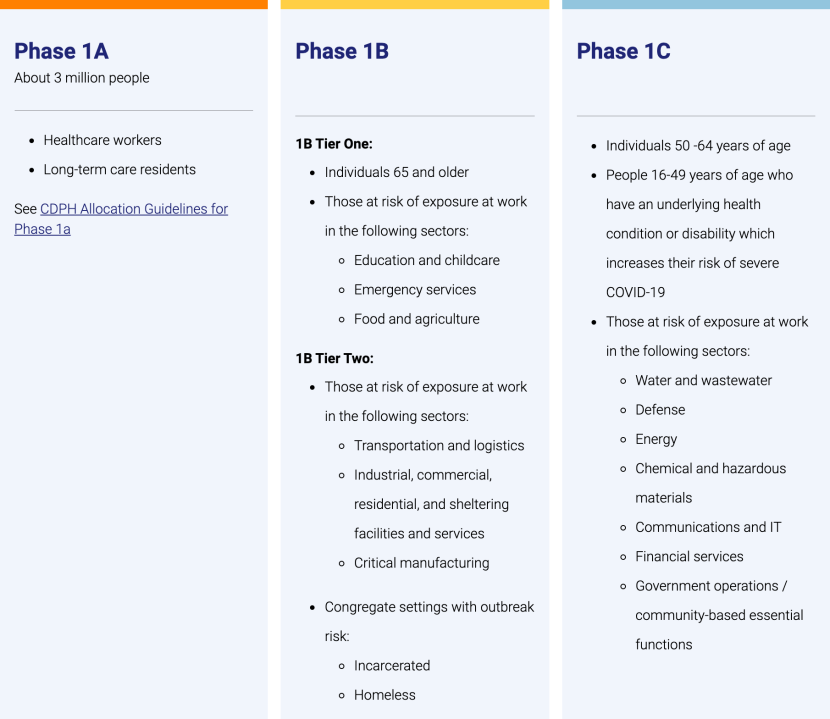California Gov. Gavin Newsom on Monday announced the state will be transitioning to prioritizing age for COVID-19 vaccine eligibility after seniors and essential workers receive their shots.
After those 65 and older, health care workers and essential workers like first responders, teachers, and food and agriculture workers are inoculated, the state is moving to an age-based vaccine prioritization system, the governor said.
He said moving to age-based eligibility “will allow us to scale up much more quickly and get vaccines to impacted communities, much more expeditiously with a framework always on equity.”
The state didn’t release a break-down of the age groups that’ll be prioritized in future tiers, and it’s unclear whether prioritizing older residents in the later stages of vaccine distribution will mean others will be getting their shots later than expected. More information was expected Tuesday.
Newsom acknowledged the state needs to ramp up vaccinations.
“While we are proud of the framework we put out, CDC put out, and others are, we recognize it has advantages, and it has disadvantages as it relates speed and efficiency,” Newsom said.
He said those 65 and older have accounted for 75% of COVID-19 deaths in the state, and so it’s important that the age group is prioritized for the scarce vaccine supplies.
“The point is to try to move folks to board as quickly as possible, but with prioritization,” the governor said, using people boarding a plane by ticket class as a metaphor for getting everyone vaccinated in tiers.
On California’s current vaccine plan, health care workers and residents of long term care facilities are prioritized first, then those 65 and older, along with education and child care staff, emergency crews, and food and agriculture workers.
Next up would be people working in transportation and logistics, critical manufacturing, industrial, commercial, residential and sheltering services, followed by the homeless and incarcerated.
Each county is moving through the state’s phases at its own pace, and it all depends on vaccine supplies.
So far, many eligible Californians have reported difficulty signing up for a vaccine appointment as slots remain limited, even as counties try to ramp up by setting up more vaccine distribution sites at theme parks, ball parks and other large venues.
Newsom also announced MyTurn, a pilot website that lets Californians sign up to get notified when they’re eligible for the vaccine. It also currently only allows San Diego and L.A. county residents to make appointments to get their shots. Eventually, it will be expanded statewide.













